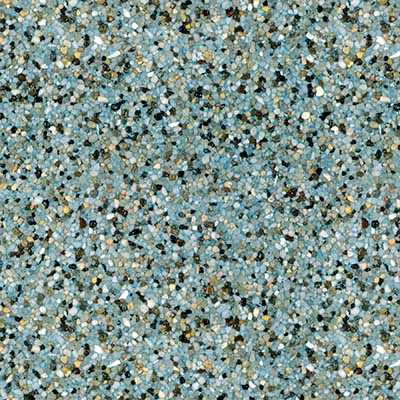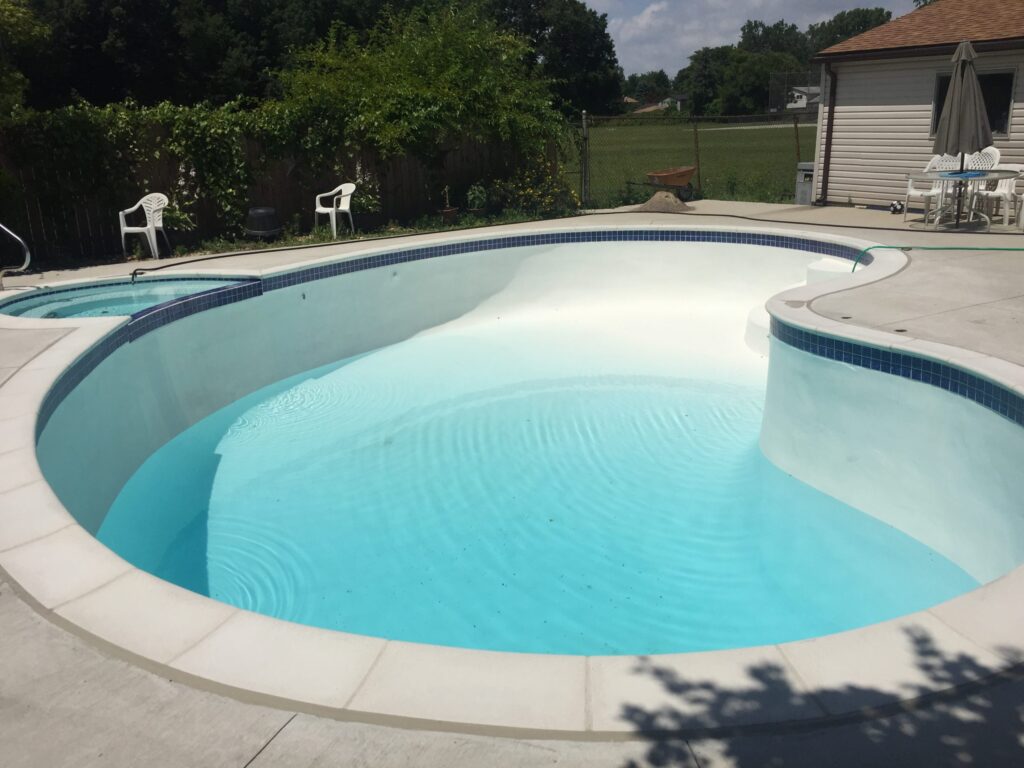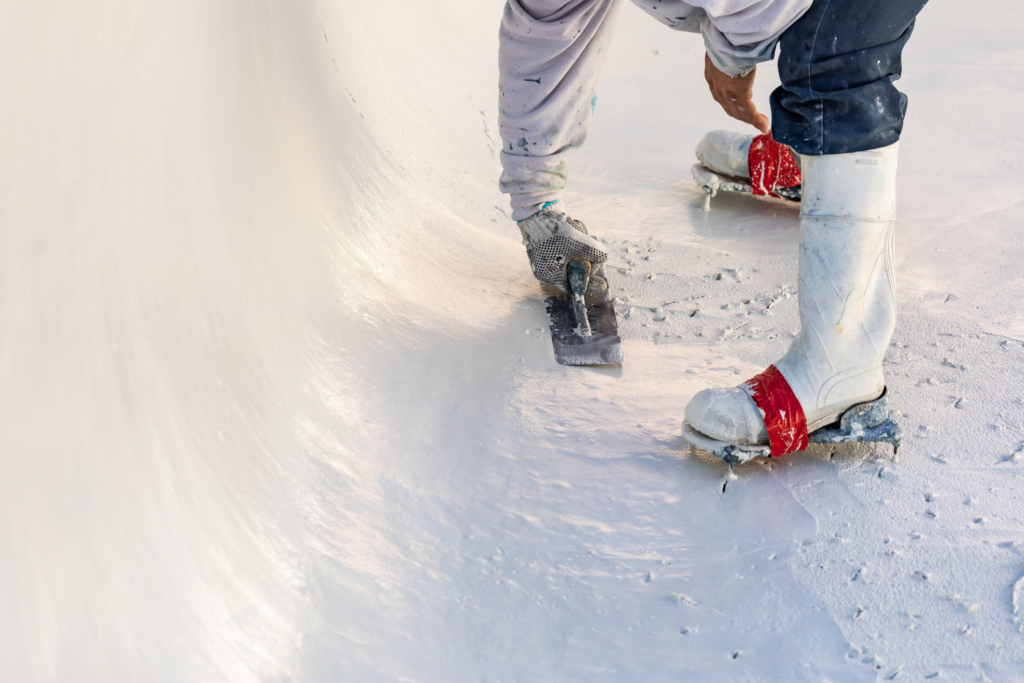When you start to notice the original plaster on your swimming pool peeling, or if you see cracks and wonder whether or not your pool is leaking, or you’re just tired of seeing discolored marks on your pool, it may be time to update the surface of your pool.
As much as we’d love pools to be built once and last forever, like any other structure, it will eventually need some updates. If you’re lucky, your pool was originally built following industry standards, but this isn’t always the case.
If your pool was originally built more than 20 years ago, it may also just be time to look into this option due to natural aging and breakdown.
The two most popular pool finishes for resurfacing swimming pools are pebble (also known as pebble or mini pebble) and plaster. Most older pools have white plaster, and some have colored plaster. Pools built around or after the 1990s are more likely to include a pebble finish. You can easily distinguish between the two types of pool finish as seen in the photo below.


Plaster Finish
If you have ever gone swimming in a pool with slippery smooth sides and bottom, you were probably swimming in a pool with a plaster surface. The look is very clean and can be very bright when the sun is out.
Pros
One positive thing about choosing regular plaster to resurface your pool is that it is more cost effective than using a pebble finish. White plaster is the cheapest color to use, so many people choose this option.

Another plus is the sides and bottom have a smoother finish and won’t hurt anyone’s feet or hands. This finish does not have any texture, and so is naturally smoother than pebble. Your swimsuit will not snag on this material, and it will be relatively easy to clean with a brush or vacuum.
As far as plaster installation, the process is straightforward, and you can begin filling your pool as soon as the plaster is applied to your pool shell.
Cons
Years ago, plaster was the gold standard for new pool surface finishes. It was high quality, durable, and cost-effective. Plaster pools would easily last 20 years and still look and feel good to the touch.
Due to changes in environmental regulations, especially in California, plaster is no longer considered the high quality material it used to be. Many pool contractors will not guarantee plaster for any length of time and will only recommend it if the owner wants a quick fix, or simply can’t afford another option.
Many people who flip houses and need a cheap way to make their pool look good use plaster as their preferred pool finish. They aren’t worried about the longevity of the pool surface, as someone else will purchase the home and take on that responsibility.
As mentioned above, white plaster is the cheaper option, but as soon as you begin adding any color whatsoever to the mixture, the price gets close to what it would cost to use a higher quality material, like pebble.
For this reason, plaster is not as easily customized as a pebble pool finish, due to the spike in costs when color is added to the mix.
Pebble Finish
Many people refer to pebble as “pebble tec” or “pebble tech” without understanding that PebbleTec is actually a brand of pebble products. There are other brands that offer pebble finishes as well.
Although Pebble Tec has been one of the longest manufacturers of pebble surfaces, it is certainly not the only one.

For the purpose of this article, we will refer to this material simply as ‘pebble’, but we will mention the equivalent finishes from the Pebble Tec brand.
Pros
A pebble finish will last longer compared to plaster, with many pool builder contractors offering an 10 year or longer warranty. Therefore, pebble finish has better value for the price Pebble can also give a more unique color to your pool surface.
Pebble pools have varying degrees of texture, so it will give more traction and stability to swimmers in your pool or spa. If you are partial to the smoothness that a plaster finish would provide, there are micro pebble options that can come close to the clean, smooth feel of plaster.
With so many color and texture options, pebble offers every pool owner an easy way to achieve a custom look, for roughly the same price as colored plaster. There are new colors added frequently, and your pool contractor can help you find the right color to complement your backyard and outdoor space.
Cons
Original pebble, or pebble tec, was rough and gave pebble a bad reputation as being uncomfortable. Now, with newer and smoother options, this isn’t the con that it once was.
Pebble can be pricier than other options, especially if you go with micro pebble or pebble fina. As the old saying goes, however, you get what you pay for. The quality you will get with pebble is unmatched, especially compared to plaster.
Pebble Options
A pebble pool finish usually comes in three different finishes, which then each comes in many different color options. Not only are there multiple colors and textures, but you can also add aggregate options that can be included in your custom blend when you resurface your pool.
As technology improves, there will undoubtedly be more options, so make sure you stay in touch with your local distributor or pool product retail store. This way, when you make your choice, you will have the latest information to help you decide.
Original Pebble
Original pebble, or pebble tec, is made of a mix of small pebbles. It has a fairly rough surface, which may feel more natural to some swimmers, almost like sand.
